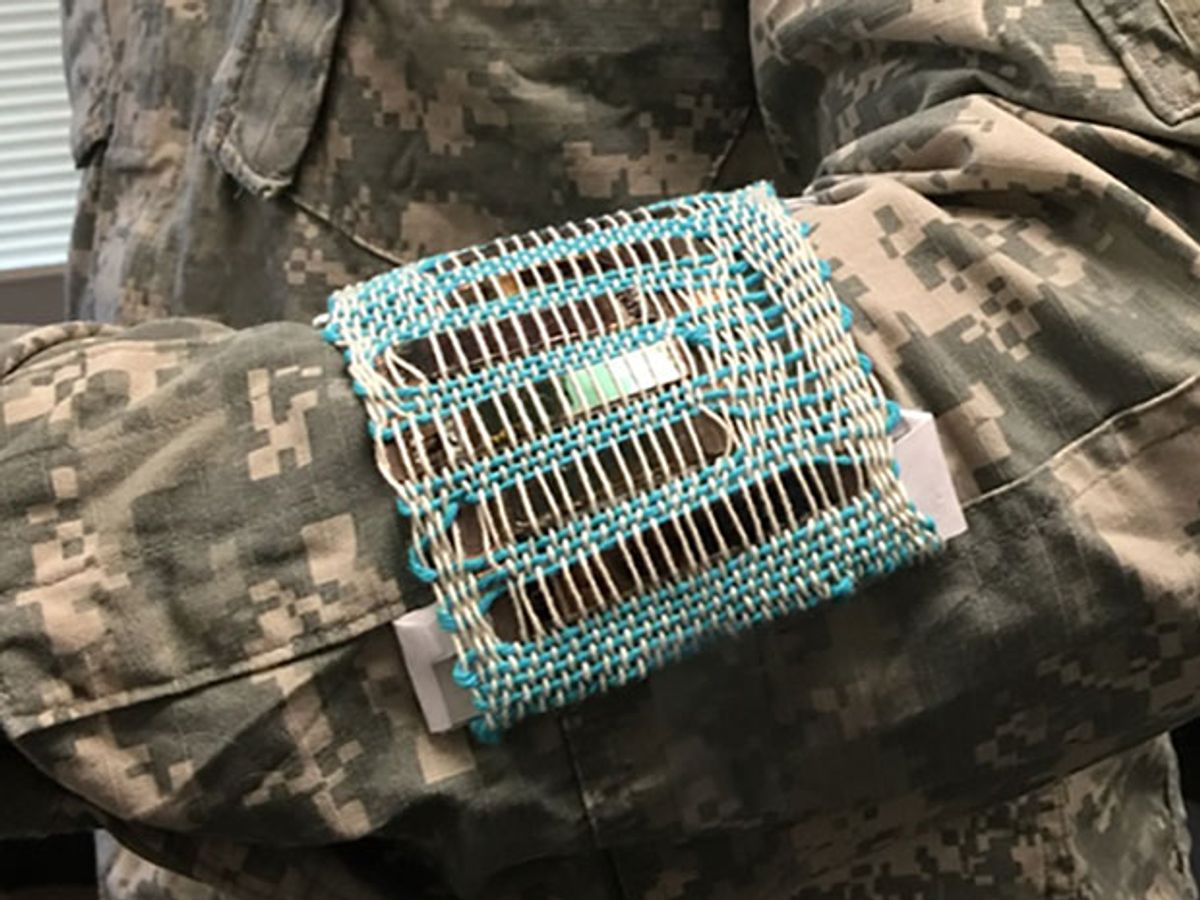Jayan Thomas, an associate professor at the University of Central Florida’s (UCF’s) NanoScience Technology Center, has devoted a fair amount of his recent research to developing nanoprinting techniques to produce high-density supercapacitors. Thomas and his colleagues at UCF have been following that up with research in the area of supercapacitors aimed at creating nanowire-enabled cables that can both conduct and store energy.
Now Thomas has kept on this supercapacitor theme, but this time has taken some inspiration from the pop culture—namely the movie Back to the Future Part II—to create garments that can serve as solar-powered batteries that would never need to be plugged in.
“That movie was the motivation,” said Thomas in a press release. “If you can develop self-charging clothes or textiles, you can realize those cinematic fantasies—that’s the cool thing.”
In research published in the journal Nature Communications, Thomas and his UCF colleagues developed a ribbon-like device that can harvest light, convert it into electricity, and then store that electricity.
The work is remarkably reminescent of research presented back in September. Researchers created a woven material comprising two power-generating components: fiber solar cells and a triboelectric generator that produces energy through static electricity. However, that device did not have any energy storage element.
In this latest research, a power generation layer is joined to an energy-storage layer. The ribbon integrates a perovskite solar cell with a supercapacitor via a copper ribbon which functions as a shared electrode for direct charge transfer.
Supercapacitors are increasingly being considered a viable alternative for powering many of the things that now depend on batteries. However, there is a bit of a tradeoff. Though supercapacitors can release a large amount of energy very quickly and can be rapidly recharged, they pale in comparison to batteries when it comes to storing large amounts of energy and discharging it over a long period of time. A lot of research has gone into maintaining that quick charge-discharge capability, while beefing up supercapacitors’ energy density.
In measurements taken by the UCF researchers, when the flexible solar ribbon was exposed to simulated sunlight, the perovskite solar cell achieved a 10 percent energy conversion ratio and the supercapacitor had a specific capacitance of 1193 farads per gram (F/g). To give you some context, a commercially available supercapacitor has a specific capacitance of around 100 F/g.
This means that the ribbon, when acting as a solar cell, can produce electricity pretty efficiently. And when it becomes a supercapacitor, it stores energy much longer than typical supercapacitors but still remains pretty short on capacity compared to chemical-based batteries.
In demonstrating the technology, the researchers made filaments from the ribbon and then weaved these filaments into a square of yarn using a loom. In real application, more advanced weaving techniques would be used. But the principle would be the same: the filaments would be woven into the material.
“A major application could be with our military,” Thomas said. “When you think about our soldiers in Iraq or Afghanistan, they’re walking in the sun. Some of them are carrying more than 30 pounds of batteries on their bodies. It is hard for the military to deliver batteries to these soldiers in this hostile environment. A garment like this can harvest and store energy at the same time if sunlight is available.”
In a telephone interview with IEEE Spectrum, Thomas did concede that at this point, the supercapacitor was not capable of storing enough energy to replace the batteries entirely, but could be used to make a hybrid battery that would certainly reduce the load a soldier carries.
Thomas added: “By combining a few sets of ribbons (2-3 ribbons) in parallel and connecting these sets (3-4) in a series, it’s possible to provide enough power to operate a radio for 10 minutes. Currently these devices are not optimized for providing the highest energy and power density. However, we are working on improving the energy density so that it can work as a hybrid battery-supercapacitor device.”
Dexter Johnson is a contributing editor at IEEE Spectrum, with a focus on nanotechnology.



